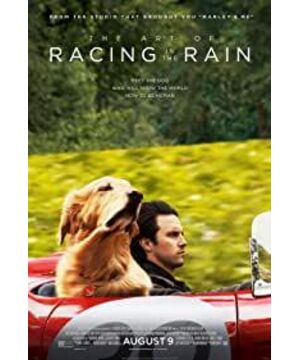It is repeatedly mentioned in the film that the afterlife of the dog on the Mongolian grassland will turn into a human, and Enzo's yearning for running reminds me of Jack London's "The Call of the Wild".
Enzo's yearning for the grassland is like the call of the wilderness to Bark. It is the instinct of the dog as the descendant of the wolf, as an animal galloping in nature. But unlike Bark, Enzo is a tame pet dog that grew up surrounded by love. The obedience in his blood, his reliance and trust in his master, have become the fetters and even the responsibility of his life. As a result, the yearning for nature and the wasteland has become the sustenance of the soul that often appears in Enzo's life, and it is also the place where his lingering soul returns.
The reincarnation legend of the Mongolian steppe adds a veil of myth to the film, and more importantly, it gives Enzo a continuation of his limited and ended life, and gives viewers a kind of spiritual comfort.
The film accurately grasps the pursuit of wildness and the calling of the soul in a dog or any person's life. What makes me more valuable is the film's depiction of death. I've watched too many movies that end in death, or simply skipped it, without describing death and the end of life. However, the end of life is the crux of the individual and society that can never get around, and our society should avoid death, which is not right.
Death is never the end, but a new beginning. From the perspective of Enzo, the film tells the beginning of the family formation, the turmoil and rebirth brought about by the death of the mistress. The end of the lives of the hostess and Enzo brought pain, but also the growth of a stronger Denny and the little girl.
The end of life is not the end, but a new beginning.
Life is like the Mongolian grassland after the dry season, no amount of drying up can stop the budding in the drizzle.
No matter who you lose in your life, trust me, your Enzo will find you again.
View more about The Art of Racing in the Rain reviews











